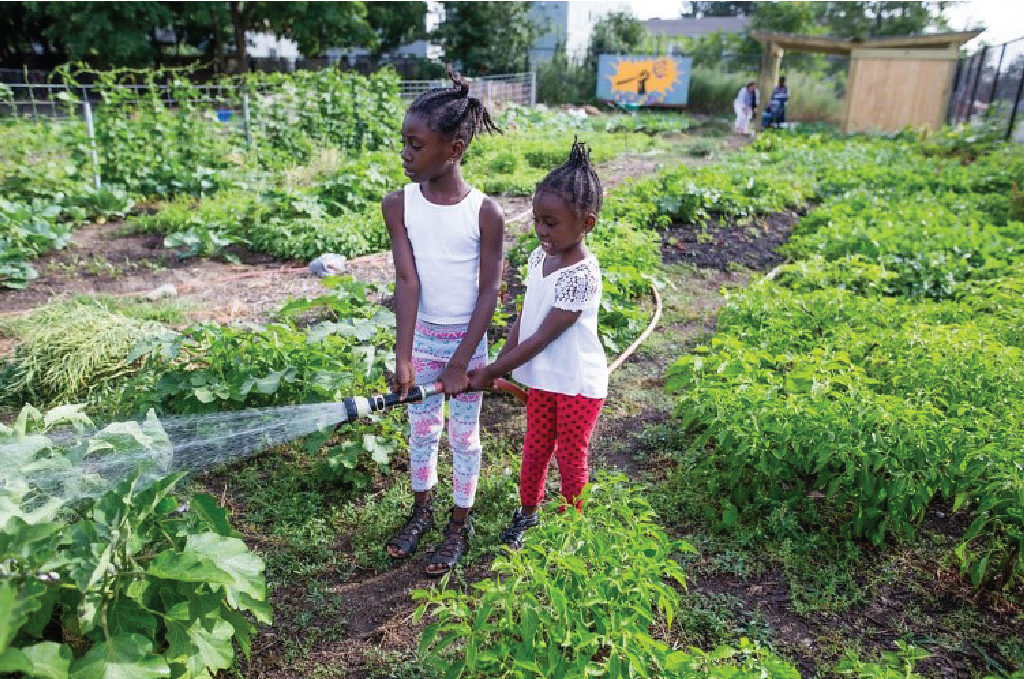Colby M. Zongol
Center for Public Health Communications, Division of Policy, Information & Communication
Rhode Island Department of Health
Where we live directly impacts our health. The toxins in our water, our access to fresh and nutritious food, our exposure to air pollution, and the safety of our neighborhoods all matter. Families living just blocks away from each other may have drastically different health outcomes, and their health has more to do with where they live than the choices they make or the quality of their genes. In Rhode Island, we believe that everyone should have a fair and just opportunity to be healthy.
Rhode Island’s Health Equity Zone initiative emerged from data on financial investments in health care and health outcomes. Although the U.S. spends much more than other developed countries on health care, health outcomes are worse here, and life expectancy is declining. Eighty percent of health outcomes are determined by factors outside the doctor’s office. Instead, health outcomes are determined by social and environmental conditions inside our homes, in our schools, at our jobs, and in our communities. Therefore, we need to shift our investments and do our public health work differently.
Traditionally, public health funding has been directed at implementing specific programs or addressing health concerns. Rhode Island’s Health Equity Zone initiative is a novel process to funding and delivering public health services. By braiding together funds from several sources, the Rhode Island Department of Health invests in building capacity and sparking community development. The place-based approach of the Health Equity Zone initiative brings communities together to build the infrastructure needed to achieve systemic changes for critical underlying issues, which include lack of quality education, poverty, unemployment, discrimination, and social isolation. These issues are root causes of disparities in health outcomes.

Community Garden in the Pawtucket and Central Falls Health Equity Zone
Health Equity Zones are identified geographic areas that historically have been under-resourced, where there are opportunities to address health inequities through investment in the community. Health Equity Zones are contiguous geographic areas that are small enough for the initiative to have a significant impact on improving health outcomes, reducing health inequities, and improving the social and environmental conditions of the neighborhood, yet large enough to impact a significant number of people.

Bike camp in Central Providence Health Equity Zone
Multiple organizations and community members must work together to create healthier, equitable places. Thus, each Health Equity Zone is led by a collaborative that represents the diverse makeup of the community, including its residents. The Health Equity Zone approach recognizes that different communities have different needs and assets. Through a community-led process, each Health Equity Zone collaborative conducts an assessment to identify key priorities within their community, and then develops a data-driven action plan to address the unique social, economic, and environmental factors that prevent people from being as healthy as possible. Community leadership ensures that actions are culturally and socially relevant, and sustainable.
History and Process
The first cohort of Health Equity Zones was solicited in 2015. The Rhode Island Department of Health requested proposals from community-based organizations that demonstrated the ability to convene and engage community partners in planning processes. These community-based organizations served as the “backbone agency” for each of the Health Equity Zones and were responsible for building the organizational structure necessary to organize the Health Equity Zone collaboratives. This work involved providing or hiring staff, leveraging local resources, and soliciting additional fiscal and in-kind financial support. Ten Health Equity Zones were established, some defined by inner-city neighborhoods, some defined by a municipality, and one that encompassed an entire county. An initial grant award of approximately three million dollars was divided between the 10 Health Equity Zones.

Sankofa World Market in the West Elmwoof Health Equity Zone
A five-step process was outlined for each Health Equity Zone to follow during the award period. Each Health Equity Zone was responsible for building and maintaining a strong, inclusive, community-based collaborative in which a diverse group of residents have meaningful participation; conducting a baseline assessment of the community to identify and describe health inequities of interest and importance; developing an action plan informed by the assessment process, which identifies key health priorities; implementing interventions that address the root causes of disparities in outcomes for those key health priorities; and evaluating the structure, process, and outcomes of the Health Equity Zone endeavors.
Through this process, the Health Equity Zones identified a variety of key health priorities that reflected the unique needs of each community, including improving food access for its residents, building substance recovery capacity in the community, addressing public safety in their neighborhoods, supporting safe and affordable housing, increasing civic engagement, improving transportation, and building resilience to climate change. Four years since its launch, the Health Equity Zone initiative is showing promising results. While changes in health inequities will inevitably take more time to measure, research shows that the Health Equity Zone initiative has created safer communities; improved health outcomes; increased access to healthy, affordable foods; strengthened educational outcomes; decreased social isolation; and linked people with substance use treatment and recovery services.
Everyone, in every ZIP code, deserves the opportunity to live a healthy life and achieve their full potential. The Rhode Island Department of Health is working to make this vision a reality through its Health Equity Zone initiative.
For more information about Rhode Island’s Health Equity Zones, visit http://health.ri.gov/hez.
